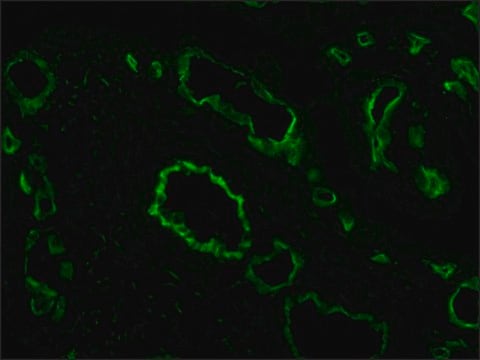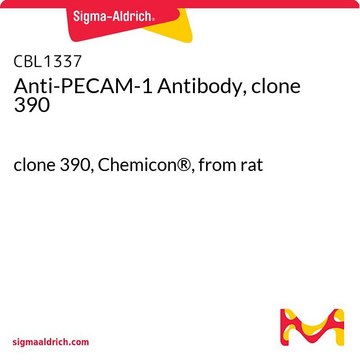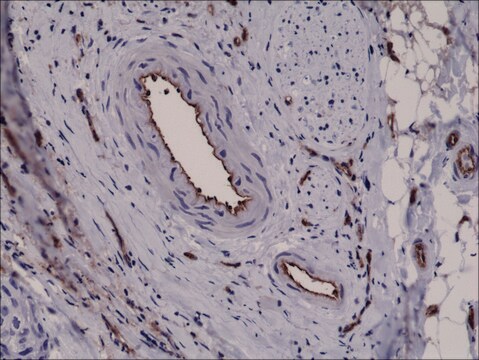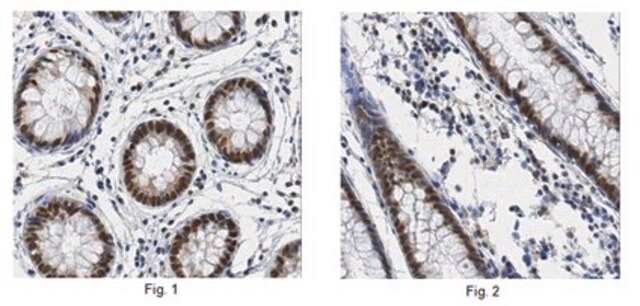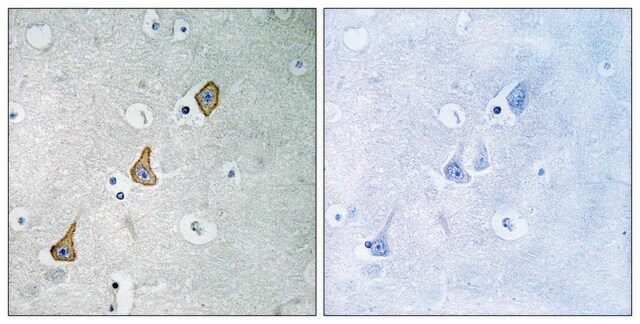CBL468
Anti-PECAM-1 Antibody, domains 3-6 of human PECAM-1, clone HC1/6
clone HC1/6, Chemicon®, from mouse
Synonim(y):
CD31
About This Item
Polecane produkty
pochodzenie biologiczne
mouse
Poziom jakości
forma przeciwciała
purified immunoglobulin
klon
HC1/6, monoclonal
reaktywność gatunkowa
human
producent / nazwa handlowa
Chemicon®
metody
flow cytometry: suitable
immunohistochemistry (formalin-fixed, paraffin-embedded sections): suitable
immunoprecipitation (IP): suitable
izotyp
IgG1
numer dostępu NCBI
numer dostępu UniProt
Warunki transportu
wet ice
docelowa modyfikacja potranslacyjna
unmodified
informacje o genach
human ... PECAM1(5175)
Specyficzność
FUSION PARTNER: P3-x63Ag8.653 myeloma cell line
Immunogen
Zastosowanie
This antibody will stain frozen tissue sections
Suitable for immunoprecipitation studies
Suitable for flow cytometry either indirectly or directly when labelled with FITC or R-PE
Suitable for use on formalin fixed paraffin embedded sections after protease pre-treatment.
Optimal working dilutions must be determined by the end user.
Postać fizyczna
Komentarz do analizy
Activated microglial cells
Inne uwagi
Informacje prawne
polecane
Kod klasy składowania
10 - Combustible liquids
Klasa zagrożenia wodnego (WGK)
WGK 2
Temperatura zapłonu (°F)
Not applicable
Temperatura zapłonu (°C)
Not applicable
Certyfikaty analizy (CoA)
Poszukaj Certyfikaty analizy (CoA), wpisując numer partii/serii produktów. Numery serii i partii można znaleźć na etykiecie produktu po słowach „seria” lub „partia”.
Masz już ten produkt?
Dokumenty związane z niedawno zakupionymi produktami zostały zamieszczone w Bibliotece dokumentów.
Nasz zespół naukowców ma doświadczenie we wszystkich obszarach badań, w tym w naukach przyrodniczych, materiałoznawstwie, syntezie chemicznej, chromatografii, analityce i wielu innych dziedzinach.
Skontaktuj się z zespołem ds. pomocy technicznej